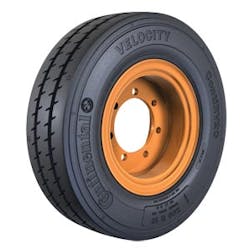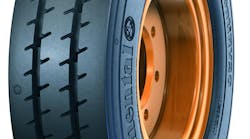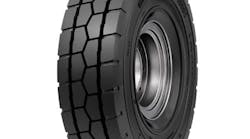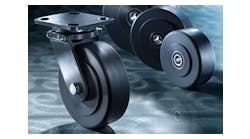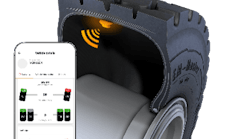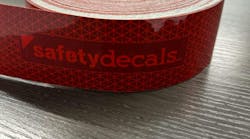By Sandra Schick, commercial tire key account manager for aviation business – Continental Tire the Americas LLC
It’s often said that when looking down from the window of a tall building, people on the street look like ants. However, if you were able to look down on the tarmac at any major airport, it would likely look more like an ant hill that had just been kicked by a school kid. Just like ant hills, tarmacs are a concentration of endless activity, rapid motion, and seemingly random travel in every direction. From the air, a ground support crew loading luggage might look a lot like worker ants handling crumbs. A tractor pushing back an airplane from the gate might appear as an ambitious ant or two attempting to haul off a snack quadruple its own size.
But what an ant hill and a tarmac also have in common is that this seemingly mad scramble is actually highly planned and organized chaos. Every ant or piece of ground support equipment has its specific task and all are interdependent upon each other to optimize overall airline operations. For instance, when a tow tractor is down due to tire damage — a common problem of ground support equipment — it not only affects the productivity of that operator, but it also slows down the beltloader operator, the baggage handlers, and everyone else — even up to the passengers of inbound and outbound flights.
The ants, for their part, are experts at avoiding this type of chaos. Except for outside forces like small children or pesticides, they have their operation quite organized.
The Right fit
Every ant has a specialized job for which he is specially built. The same applies to your GSE tires. One tire does not fit every application, or every vehicle — and just because the size appears correct does not mean the tire will function the way you want it to. The most common situation involves selecting a passenger vehicle tire for ground support vehicles. While these tires provide comfort when you drive your car, they won’t have the durability that’s needed to withstand the tarmac environment, and they probably won’t be able to stand up to the heavy load. Using the wrong tire for the application will most likely result in early removal — which means down time for the vehicle and less productivity in your operation.
The key to knowing the right tire for your application mainly depends on load and speed. A cross-ply tire is going to serve better for equipment requiring stability under extreme loads.
This would include large pushback tractors. For high speed and long distance applications, you’ll want a radial tire. This would apply to tow trucks, baggage loaders, various service trucks, container and pallet loaders and passenger transportation. A solid tire can be chosen for equipment where constant damage that causes flat tires is an issue. This would apply to tow tractors or a baggage cart.
Tires for the ground support application should also be selected with consideration of their tread design. A ribbed tread design will reduce vibration and consequently extend the life of the vehicle itself, and can give you the traction that you need. At high speeds, heat buildup will reduce the service life of the tire. Balanced tread depths will reduce this heat buildup significantly. A smooth tread will also work in the high speed situation.
However, a lug design can create more rolling resistance — which means that the tire requires more energy to move. This makes the vehicle by default less energy- and fuel-efficient — in the case of heavier equipment, rolling resistance can account for up to 30 percent of fuel usage. A lug tire operating on uneven surfaces is less comfortable for the vehicle operator. Also, the lug tire is more susceptible to developing “heel and toe wear,” a common uneven-wear problem with tires on ground support equipment. The resulting tire vibration can lead to reduced travel speeds, damaged axle linkage, dropped baggage, higher fuel/energy costs, increased operator fatigue and, most importantly, safety concerns.
The Continental ContiRV20 is a purpose-built tire, designed specifically for ground support vehicles. The ContiRV20 was just introduced in 2009, and it has the ideal characteristics with a perfect balance between comfort, mileage, high-speed capability and a strong durable construction. This is a radial tire that offers a more comfortable ride for your support personnel.
Continental designed the ContiRV20 with a closed shoulder to avoid tread tearing, as well as reinforced sidewall that resists damage. As you know, damage resistance is especially important in the ground support application due to the danger of tread chunking, resulting in FOD that can enter the airfield. The tread compound of the ContiRV20 minimizes rolling resistance for better fuel economy, and still maintains a full grip on airport ground surfaces. The ribbed tread design reduces vibration, which extends both tire and vehicle life.
Proper Maintenance
Proper maintenance of the ant colony ensures their future success, just as proper management of your tires will ensure that you get their maximum life. A superior quality industrial tire for ground support vehicles may have a greater purchase price up front — but if maintained properly, the tire’s total cost of ownership will be less.
Proper management of your tires, just like proper maintenance of the ant colony, is achieved by constant vigilance. Start with ensuring that the tires installed on your equipment are being properly used for the vehicle’s application and load. Regular checks of air pressure cannot be emphasized enough, and are next first line of defense. The tires should be inspected regularly for evidence of irregular tread wear, tread damage, foreign objects, rocks and unusual conditions such as cracking, blistering or swelling.
In summary, our industrious friends the ants will persevere regardless of ground condition, weather and invaders in their never-ending quest to expand their empire. As they never stop moving, neither should your ground support vehicles. With proper tire selection and maintenance, you can keep your vehicles and your operations running smoothly.
